The 1st Independent Polish Parachute Brigade
(1 Samodzielna Brygada Spadochronowa)
The Deportations Of Poles in 1939
Ethnic Cleansing By Stalin
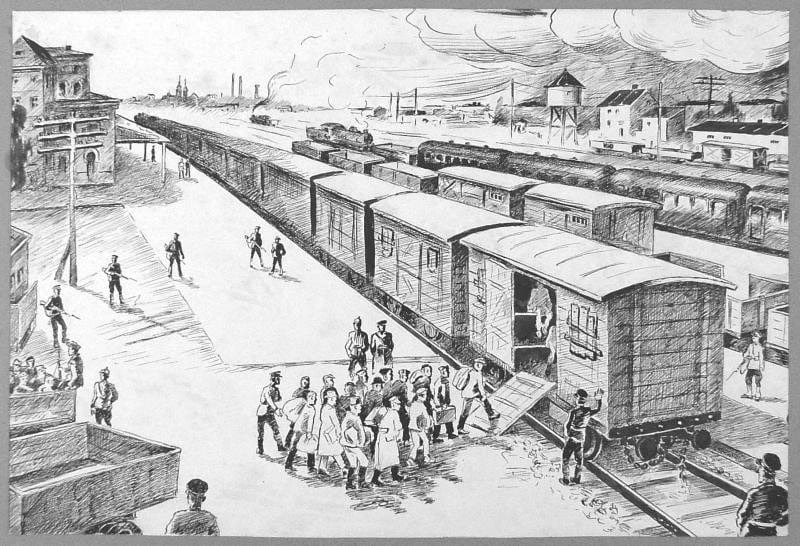
The deportation of Poles in 1939 from their homeland is one of histories great "barely told" travesties.
Wars mobilise people. Whilst armies march, offensives are met with counter-offensives. Hostilities, violence and fear spread like an epidemic causing ordinary civilians to flee. Quickly, entire nations fluidly move to adjoining countries and the path of history and ancestry are changed forever.
This is what occurred after the Molotov Ribbentrop agreement took effect and both Russia and Germany invaded Poland.
Whereas Hitler had condemned people based on their racial background, Stalin condemned them on their social criteria. And thus, Stalin commenced moving ("deporting") a large proportion of an entire nation from their homeland in the Kresy region of Poland to Siberia and Kazakhstan.
This came to be known as the "deportation of Poles in 1939".
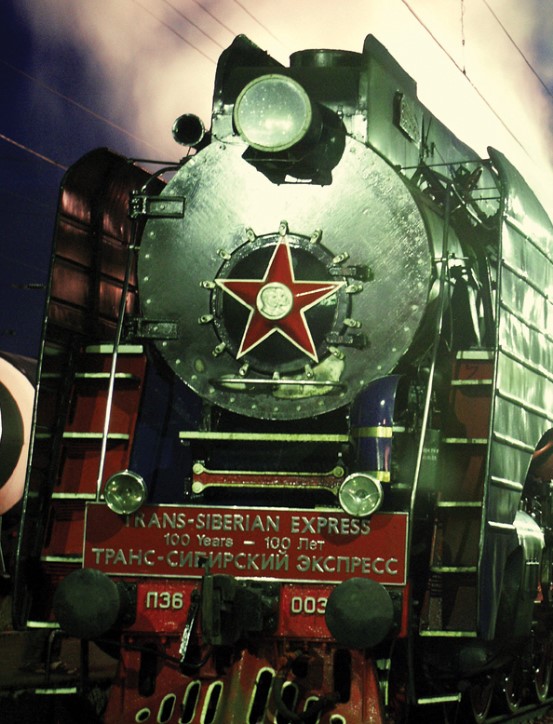 © www.swoopingeagle.com
© www.swoopingeagle.com
Although the term "deportation" is widely used, deportation was really for the realm of the criminal. What crime had the Poles committed to deserve this? Being Polish?
Really, this was "ethnic cleansing", Stalin was clearing the Poland of Poles, under various guises, but ultimately ethnic cleansing was the correct term to use for his actions. However, "deportation" is widely used and for the purposes of continuity we will use this term herein.
Witnesses Speak Of The 1939 Deportation Of Poles
This video covers the 1939 Russian invasion of Poland, the initial confusion on the Poles part as to what was going on and then onto the deportations. As you watch the video, picture this happening to you and your friends. Very moving.
A fantastic short 5 part series detailing the entire experience Poles went through from 1939 onwards`:
The Knock Before Terror Came In
To undertake a deportation, the NKVD adopted the approach of knocking urgently on their door in the middle of the night. Repeated urgent knocks would follow, with urgent shouts to hurry up and open the door.
Russian soldiers with bayonets would burst in shouting "hands up" and would force the entire family, including children up against a wall whilst all were searched for weapons. The house itself would then be searched for weapons.
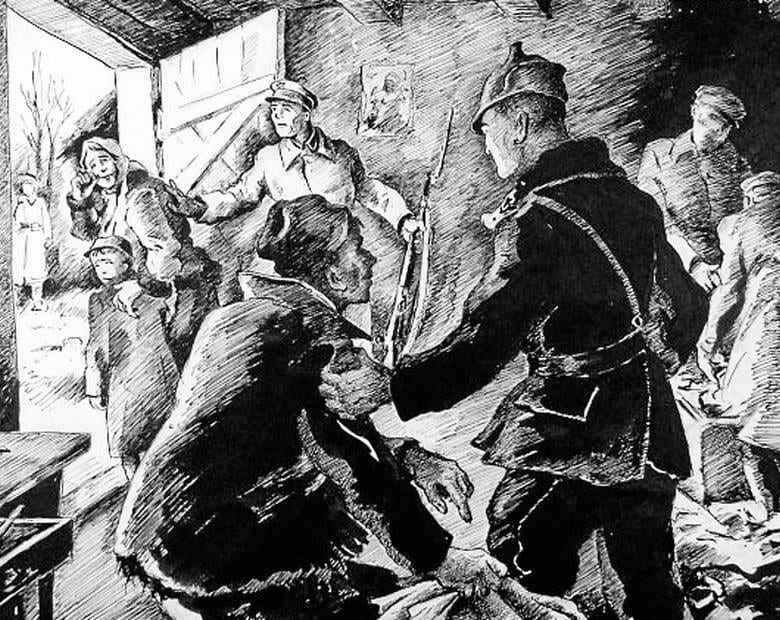
The Polish citizens, having been subjected to sudden fear and in many cases violence, particularly the husband being struck with the bayonet as a form of gaining control and suppression, would then be in a highly emotive state, often crying uncontrollably.
They were given a short amount of time to get some belongings together (many took barrels of salted meat, photo albums, foodstuffs and winter clothes). Normally, at this point, the news of the families arrest would spread like wildfire around the village.
A short ride normally on a sleigh or horse and cart (where the cart was often a re-purposed dung cart) would then take the family to the railway siding. Villagers would often follow, crying, bidding farewell knowing they were unlikely to ever see their neighbours again.
False Arrest Charges
The above section was the typical scenario for those in wave 4 of the deportations.
Waves 1 to 3 were slightly less different in that a pretence of legal proceedings was carried out often against a single person in the household, for instance that they were an "Osadnik" (i.e had fought for Poland previously and had been given Polish land as a gesture).
Wave 4 deportations were generally speaking, the riddance from Poland of anyone connected in anyway to those deported in waves 1 to 3.
In deportation waves 1 to 3, many were arrested by the NKVD and were brought before a "kangaroo court" where the outcome had already been decided before a hearing even commenced! The proceedings themselves were often as little as 3 minutes long, the accused had no fair trial or ability to defend themselves.
The bewildered polish citizen was then accused of an imaginary offence such as sabotage, spying or even just "defamation of the soviet union" and within mere minutes was found guilty and sentenced for 10, 15, 20 and even 25 years of hard labour.
Re-Enactment Of Deportation (2025)
In 2025 a re-enactment of the deportation occurred in Bialystok. Read more here: https://ddb24.pl/artykul/rekonstrukcja-w-85-rocznica-n1672559
The Deportation Train
The term "deportation" was used, as if, in some way, these people had committed a crime. The crime? Being Polish.
This was not "deportation" but rather the mass forced removal of Polish citizens from their homeland and onward towards imprisonment within hard labour camps where the ultimate jailor was the climate of Siberia itself.
A better description of these trains would be "Genocide Trains" because the purpose of them was to rid Poland of Poles with the Gulags, their ultimate destination, reducing their life expectancy to a single year.
"Genocide", the deliberate mass killing of an ethnicity, is a much better description than deportation, but for now we will stick with "deportation trains" as that is the commonly known (and sadly, commonly accepted) phrase used for this poignant point in history.
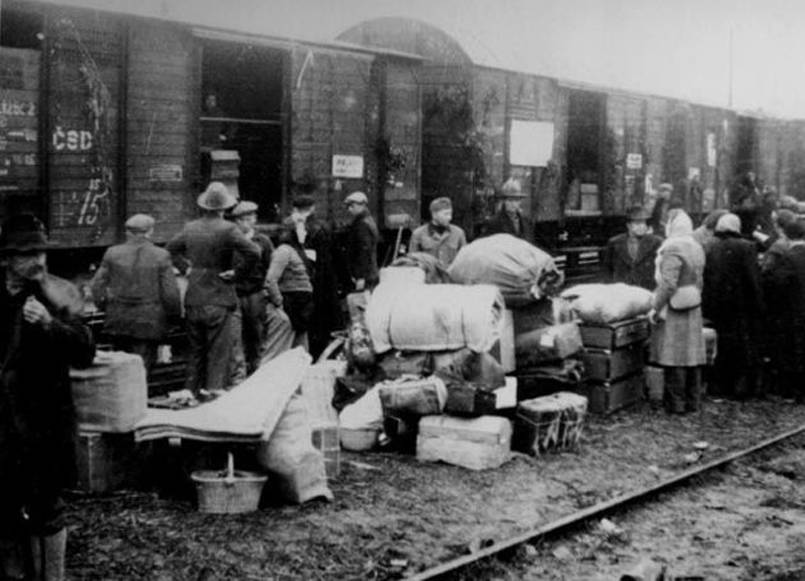
Polish deportees being forcefully boarded onto a "deportation train" to Siberia.
The Railway Carriages
The railway carriages that the innocent polish people were loaded into were "cattle wagons". As many as 70 were brutally bundled into a cattle wagon that could comfortably take 20. There was no privacy.
Most accounts from survivors mention them cutting a hole in the floor through which they had toilet facilities.
Some survivor accounts mention women being unable to undergo this level of indecency and literally dying from burst bladders. Other accounts mention people ceasing to feel human or even caring as natural body functions took over.
The stench was unbearable as men, women and even children performed bodily functions in front of everyone.
Some survivor accounts mention that they were locked in the railway carriage and left in the siding for up to 3 weeks before the journey even began. Lack of food, water and extreme temperatures caused some to die in the overfilled carriages. Dead bodies were tossed out, unable to have a decent burial.
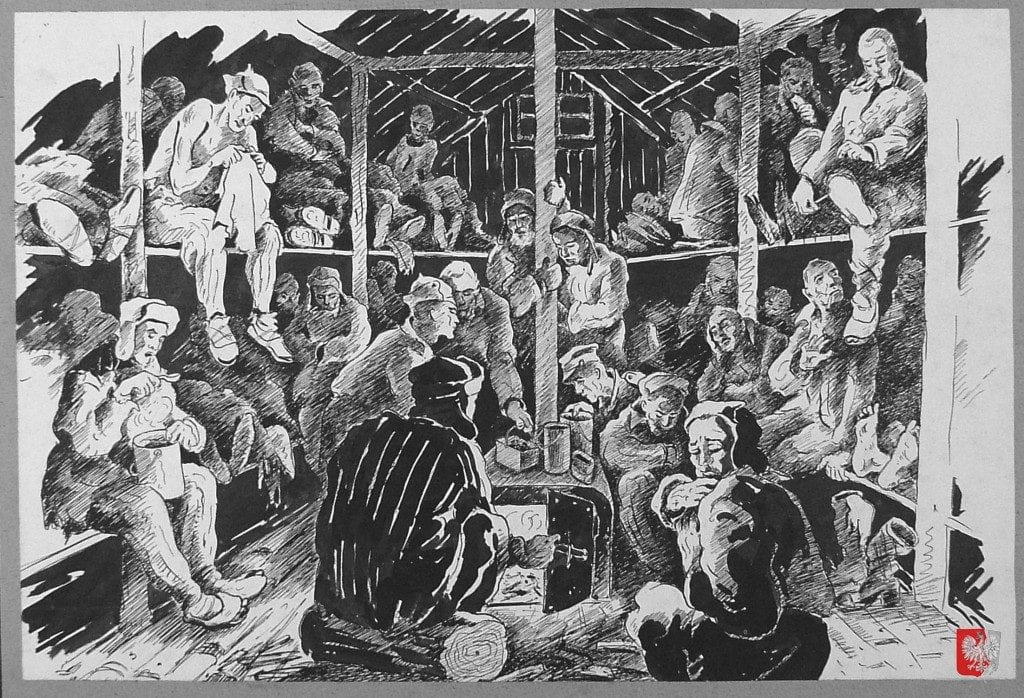
An artists depiction of the inside of one the cattle carriages carrying deported poles to the Soviet Gulags. This picture seems to show rather much more space than survivor accounts recall.
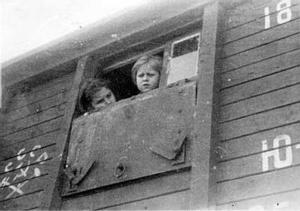
2 Polish children who knew not what their fate would be...
The 4 Waves Of Deportation
In February 1940 the Soviet Union started to deport Poles to exile in Siberia. There were four major deportations:
Wave 1 - 10th Feb 1940 - 218,000 Deported
Polish military settlers, policemen and foresters.
Wave 2 - Apr 1940
Families of officers imprisoned in the Soviet Union and Poland, in hiding and abroad.
Wave 3 - Jun 1940
Refugees from German occupied Poland who had not accepted Soviet passports.
Wave 4 - Jun 1941
Polish citizens from the Baltic states and those missed in earlier deportations.
The Important Difference Between "Siberia" & The Soviet Gulags
The words "Siberia" and "Soviet Gulags" often get used interchangeably with the same meaning being adopted, that is, a hard labour camp.
However this is not the case.
Whilst many were deported to hard labour camps under prison guard in Siberia (Gulags) , others worked on collective farms in Siberia. Yet others worked on collective farms, mining works, forestry etc often with just basic guards because there was nowhere to escape to, escape meant almost certain death.
Further, a term "Sybir" is often used by those who were repressed. "Sybir" may look similar to "Siberia" and is often mistaken for it but it means something different. Sybir is a symbol to denote the suffering and imprisonment the Russians gave out to the Polish people within the Soviet Union & Kazakhstan from the 16th century onwards. It is regarded as being the largest prison in the world. Sybir is a symbol of suffering & pain as well as determination, strength and fight to survive.
Journey To Siberia & The Soviet Gulags
The journey to the Soviet Gulags took a staggering 3 to 6 weeks depending how far away your destination gulag was. Many died along the way from exhaustion, lack of food, water or heat.
Although accounts mention wood burning stoves being in some cattle trucks, no wood was given to them so they had to hurriedly scurry around whenever the train stopped and quickly locate piece of wood which would give a little heat for a short period.
Those who packed kettles and pots were able to scoop up fresh snow when the train stopped and thus use it for washing or boiling a kettle on the stove in the cattle carriage. However this came at a price.
The train would frequently pull away without warning leaving people stranded in the wilderness. Did they live or die? We will never know.
The trains travelled in extreme cold temperatures, hands would get stuck to the side of trains and ripping skin off was a real hazard. Even hair would get frozen to the side of trains if blown against it.
The Russians at railway stations were sympathetic to the plight of the deportees and would attempt to discreetly help them. However they had to be careful for this could get them into serious trouble with the authorities.
What Happened To The Engines?
Many of the engines that at one time pulled the carriages of the Polish citizens being deported from their homeland now lie abandoned, mostly in Siberia. There are many pictures on Pinterest of the abandoned Siberian railway (well worth a look).
When you see the pictures of the rusting engines, you also see the folly of Stalin's plan to wipe out a nation, that plan too is rusted and broken.

The "Fallen And Murdered In The East" Monument
Unveiled on 17 September 1995, this monument in Warsaw commemorates the victims of the soviet invasion of 1939.
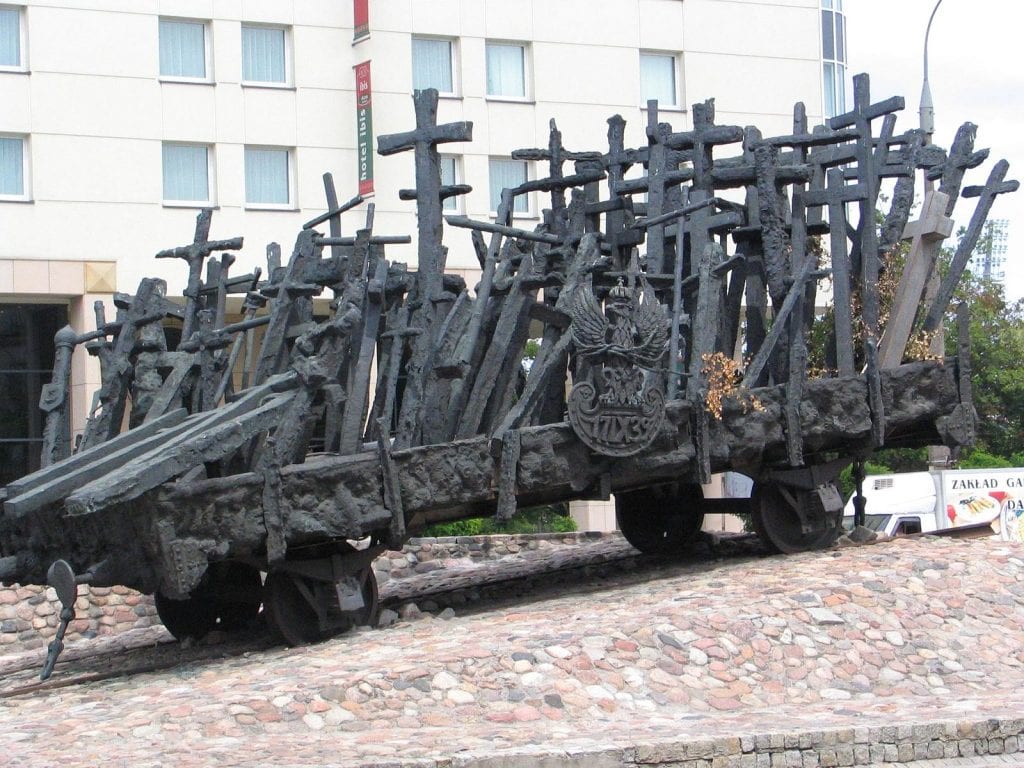
Each railway sleeper here depicts a stop the deportation trains would make to pickup more deportees:
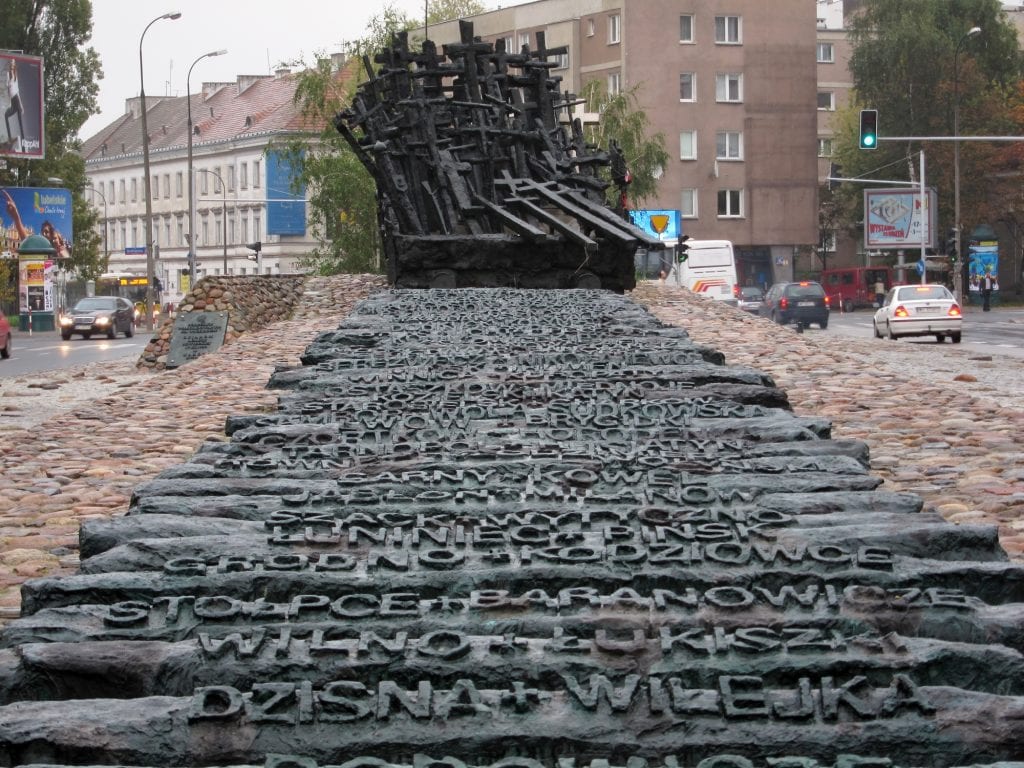
Please Donate!

Uncover The Past - Support The Future
Please don't "grab & go"! Each year, 12,000 people visit this website to trace their Polish ancestry, uncover family stories, and connect with their roots. I believe that history should be accessible to all - but keeping this website alive since 2017 comes at a personal cost to me, 8 years @ £1000 per year (website mgt fees) has left an £8000 dent...with only £380 in total donated up to 27/11/25 😱😱😱.
Every detail you uncover and every story you piece together helps you piece family history together. Please donate if you found the existing information on this site useful, help me keep the site alive! Thanks! Jason Nellyer (Researcher & Site Owner)